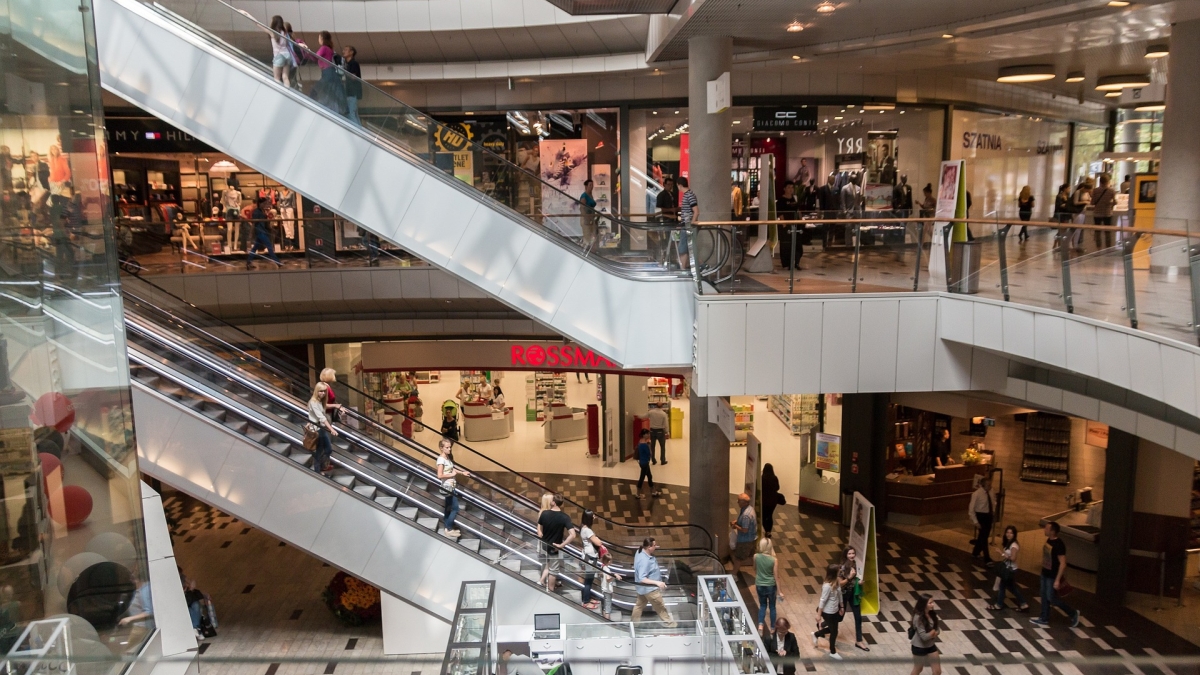Paradise Valley Mall, an icon of northeast Phoenix retail, has shuttered its doors for good to make way for a future mixed-used development.
The corporation that owns the 92-acre property announced its closing March 29 after first opening in 1978. The indoor shopping mall, which included department stores, boutiques, movie theaters and a food court and which helped introduce Chick-fil-A to the Phoenix market, will be radically transformed in the upcoming months. New uses will include a “high-end grocery, restaurants, multifamily residences, offices, retail shops and other elements,” according to a press release issued by Macerich, which sold the property to Phoenix-based real estate company RED Development and will retain a 5% joint venture interest on the project.
The mall’s closing is not an anomaly, according to Hitendra Chaturvedi, a professor of practice in Arizona State University’s W. P. Carey School of Business. An expert in supply chain strategy, global logistics, entrepreneurship, sustainable supply chains and digitizing supply chains, Chaturvedi said many more mall closings are on the horizon.
ASU News spoke to Chaturvedi about this phenomenon, why it’s happening, and what the future of American retail looks like.
Hitendra Chaturvedi
Question: Over the past few years, America has seen the slow motion death of shopping malls. What’s happening here?
Answer: Traditional shopping malls are coming close to their expiration date, and some operators and owners are not realizing this and I hope they do so soon. A report from Coresight Research estimated that out of roughly 1,000 American malls, a quarter will close down in the next three to five years.
Traditional malls are a 1970s and '80s phenomenon and targeted towards a different generation. That model worked then, but many things have changed now — including customers' profile, demographics, customer preferences, channels of sale and technology. Long gone are the days when teenage socializing meant piling up in cars and going to the mall … when shopping meant getting all decked up and heading for the mall and coming home with bags of “stuff.” Shopping used to be an event and occasion. The demise started with the housing crash and has just accelerated over the last three to four years, and the pandemic is putting the last nail in the coffin.
Shopping for the new generation of customer is a convenience, a commodity, a necessary evil … to be done to enjoy other things in life. Socializing for the new generations has a totally different meaning, where social media is replacing what malls used to do for the Baby Boomers. The other nail in the coffin is the rise of e-commerce, particularly after the pandemic. Amazon has changed and transformed how we shop. People are now so used to shopping in their PJs. To beat or compete with Amazon, all traditional retailers are moving online, including the likes of Walmart.
So … buggy whips were a great product but became obsolete when internal-combustion engines were put into a contraption that we now know as cars and customer preferences changed. The same thing is happening to the traditional malls.
Q: Are retail shops going to go away entirely? What role will technology play in all this?
A: Malls will have to embrace technology like never before as traditional retail will be changed forever. Already technology exists where you can try on clothes in the privacy of your home, or even virtually in a store. Tying that technology to a supply chain that will be customized not to a demographic but to a target segment of one will enable shopping and delivery that will not only closely mirror instant gratification of touch and feel of a traditional retail store but also take customer service and customization to the next level never possible in a traditional retail structure.
Retail stores will become “experience zones” and not inventory storage places where a customer can try products in a real-life environment simulated by holographic technology. Integrating it with next-gen supply chain will ensure delivery before you even reach home from your experience. (Artificial intelligence) will predict needs and recommend shopping and even control what we will believe as “spur of the moment” buying.
Q: Once malls are knocked down, what do you predict will be going in its place?
A: Smart retailers, mall operators and mall owners are already experimenting with what future possibilities are. Amazon reportedly held talks with Simon Property Group, the biggest mall owner in the United States, to discuss converting empty retail space into fulfillment centers that pack and ship Amazon orders. To explore options, we need to divide malls that fall into prime real estate and ones that are not. For prime real estate malls, options could include more service businesses, satellite office spaces for companies after the pandemic as an alternate to working from home, integrating high-end apartment complexes and condos with retail, opening hotels. Parking lots have the possibility of being converted into green zones.
The future is a little bit more bleak for the malls that are second tier. There is a very high probability that these will end up getting converted into warehouse space for e-commerce that is on a quest to be as close as possible to the customer.
Q: If you could look into a crystal ball, what do you see happening to retail in the future?
A: When I think of malls, I am forced to draw a parallel with airports. Retail is discretionary but airline travel is a necessity, so we tolerate the most inhuman experience that our airports dish out to us, but change is happening here too. Singapore’s Changi International Airport has been ranked the best in the world many years running. The biggest reason is that Changi does not feel like an airport. In such a large airport where millions travel, it does not appear to be crowded and every traveler can find their own privacy — and even waiting for 12 hours is pleasant. Many international airports are emulating the same experience with huge success and one of them is the new international airport in Mumbai, India.
Malls have a greater urgency to change because unlike airports, customers cannot be forced to go there if they do not like the experience. So what should they do? Borrow a page from airports like Changi, or rail stations in Tokyo where shopping is not in your face but subtle. Make shopping not the main focus. Make it a destination for experiences that the new breed of customers care about. If they like the experience and find their peace, shopping will automatically happen. Many things can be explored. For example, if you have a restaurant, don’t make it feel as if you are sitting in a place with everyone looking at you. Even in a mall, create an oasis for each customer … and while they are waiting for a table, they may decide to walk into a virtual rainforest created by North Face and end up buying a rain jacket. In my crystal ball that is how shopping of the future will happen.
And while we are at it, let us change the name, too. Let us not call it a “mall” … that name has a lot of baggage with it. Let us find some other name … or maybe no name at all.
Top photo courtesy of Pixabay
More Business and entrepreneurship

ASU MBA ranked No. 1 in the US for entrepreneurship
In the Poets&Quants 2025 Best MBA Programs for Entrepreneurship ranking released today, the W. P. Carey School of Business at Arizona State University was named No. 1 in the U.S. and No. 2 in the…

New ASU certificate to address veteran underemployment
Veterans and military spouses bring a wealth of talent to the corporate world. Unfortunately, human resources and hiring managers without military backgrounds often struggle to understand…

ASU China Executive MBA ranked No. 7 in world by Financial Times
In the 2024 Financial Times rankings for Executive MBA (EMBA) programs, Arizona State University's W. P. Carey School of Business China Executive MBA program ranked No. 7 in the world, ahead of the…

